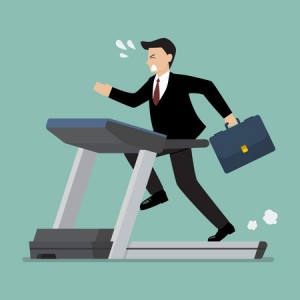The following is an article Zac Marshall, one of our Corrective Exercise Specialist wrote for out newsletter. It got such great feedback from our subscribers, I thought I would post it for anyone else to read.
We regularly send out very informative articles for the general population as well as health professionals. Be sure to subscribe to our newsletters if you have not already.
“The Hip Bone’s Connected to the . . . Back Bone”
By Zac Marshall
We’ve all heard that well-known children’s song about bones: “The foot bone’s connected to the . . . leg bone” and so on. Little do we realize, , the wisdom of this song as it relates to our health. Over the last few decades, one of the most significant principles health and fitness professionals have come to discover about the body is, as this song states, the connectivity of the musculoskeletal system. If we humble ourselves and learn from this simple children’s song, the key to much of our pain and physical limitation may become clearer.
Let’s apply the “Bone’s Song” to the number one reason people visit the doctor behind the common cold: lower back pain. As the “Bone’s Song” develops a key line appears: “The hip bone’s connected to the . . . back bone.” Contrary to this line, when most people think about back pain, there is s common misconception: they only look at the back. The wisdom of the “Bone’s Song” tells us that to understand the back, we must first understand the hip, the back’s closest ally.
Traditionally, the hips have often been an ignored piece of the low back pain puzzle. After all, if the hips aren’t hurting, they’re not a part of the problem . . . right? Wrong.. To better understand the low back pain mystery, it is essential that we look to unveil all the possible culprits behind the symptoms. The possible culprits to low back pain are many, including the feet and ankles; the knee, the upper back, the shoulders, and even the neck. But what we can be certain that if the hips aren’t working, the back is hurting.
There are several reasons why the hips are so commonly connected to low back pain. For one, the hips and the low back are direct neighbors. Thus, when the hip misbehaves, the low back is one of the first areas affected. To make matters worse, the hips have a tremendous amount of responsibility in aiding general musculoskeletal function. Due to their large muscles the hips are appropriately referred to as the “cannon” of the body. The problem with this is, if the hip “cannon” is not contributing properly or adequately to body movement, the low back is left highly vulnerable to undesirable stress and strain.
The low back is left especially vulnerable when the hip experiences one of two problems. The first problem the hip may experience is not providing enough motion (inflexibility). The second problem is not providing enough strength. When either (or both) of these problems are present, the low back often takes a hit.
Let’s focus our attention on what can happen to the low back if the hips experience the first problem: inflexibility. In order for the body to move and function in space the way it was designed to do, the body requires hip flexibility in three dimensional space (front to back, side to side and inward and outward rotation). When the hip experiences limited motion in any one of these three dimensions, it’s neighbor, the low back, is commonly called in to make up for the hip’s limitations. When the low back is asked to make up motion for the hip’s limitation, excessive flexibility occurs in the low back. This excessive flexibility is typically coupled with excessive joint wear and eventually pain.
One common example of the low back achieving excessive flexibility (and pain) due to the hip’s inflexibility is the activity of walking. During walking, the hip muscles must lengthen in order for one leg to extend behind the other. If the hip muscles cannot lengthen sufficiently, the body still knows it needs to move one leg backward. In order to do this, the body will often resort to having the low back increase it’s movement (by arching) in order to aide the leg in moving backward. If this compensation occurs often enough, low back pain is likely to develop.
Another common example of the low back suffering as a result of limited hip motion is in swinging activities. During swinging, the body needs to “wind” up in order to reverse directions and accomplish the swing. The winding that is required is an accumulation of motion at all the major joints of the body, including the hip. If the hip is not able to wind up adequately due to inflexibility, once again the low back will often make up for the difference. In this case the low back will either attempt to rotate more than it is designed to or it will once again excessively arch in order to achieve the movement. Just as in the walking example, if this compensation is repeated often enough the tissues of the low back become irritated and cause pain.
It’s amazing to realize how much understanding we can gain when we take our eyes off the symptom and look elsewhere for the cause of pain. This process is as simple as repeating the words to a simple yet profound song: “The hip bones connected to the . . . back bone.”

